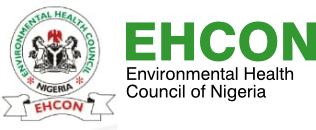History of Environmental Health

The history and the development of Environmental Health are unique and complex in every country of the world. It is not possible to assign a specific date from which problems relating to environment started. However, the need to control the environment in the interest of public health has been evolving for a long time. For convenience, it has been possible to divide the evolution of environmental health control into four time zone in which time can be assigned. First, the agricultural revolution following Malthus observation (1750-1850). The period was characterized by low living standard among the farmers who lived in overcrowded damped houses, bearing large number of children, and eating poor diet. There was also marked increase in the number and incidences of diseases and deaths, poor domestic environment and low life expectancy. Second is the industrial revolution of 1850-1900, which witnessed the beginning of industrial pollution as a result of using rudimentary machines and unprocessed toxic substances for industrial processes. The third is the period between 1900 and 1945, while the fourth is 1945 to the present date.
The initial phases of sanitary activities centered on keeping human excreta out of food. Indeed, about 10,000 BC, nomadic hunters simply left their wastes and move to another location. Today, the field covers an imposing spectrum of activities of high technical and scientific dimension. The trend has been to draw away from activities, which involve repair, correction and enforcement toward programmes that are proactive and promotive in nature. Until recently, public health activities have been based upon negative concept, resulting in programmes designed to attack things that have gone wrong like isolating infected person, filling decayed tooth or purifying polluted water. Now, environmental health principles are focused on maintenance of cleanliness, promoting hygiene practices and prevention of ill health.
Environmental health programme (EHP) being perfected today started during the industrial revolution of the 18th and 19th centuries following the mass migration of people from rural areas to the cities in search of jobs. Living conditions then became poor and outbreak of several communicable diseases with high morbidity and mortality became rampant. In 1842, Edwin Chadwick of Great Britain, a Lawyer by profession spearheaded the Poor Law Commission, which enquired into the sanitary condition of the labouring classes. The report of the Commission recognized the association between the general environment of the dreadful living conditions of the poor and the development of illness. This led to the enactment of the 1848 Public Health Act, which was borne out of the desire to control these environmental conditions and abate them.
In Nigeria, the development of environmental health has had a more challenging history. As far back as the 18th century the Colonial government took the issue of preventive health services serious because of the need to prevent the breeding of mosquitoes, which was a major killer of the colonial settlers. They introduced the then Sanitary Inspectors to the Colony of Lagos. The position of the Sanitary Officer was a very top position in the then Colonial government. That was why the Senior Municipal Sanitary Officer was statutorily made a member of the Legislative Council in 1913 on the amalgamation of both the Southern and Northern Protectorates of Nigeria, (Akinyede, 1957).
The present day environmental health services in Nigeria started in 1920s, when Dr. Isaac Ladipo Oluwole came back from Britain as a Public Health Physician. He was the first African Medical Officer of Health (MOH) in the Lagos Colony, who also pioneered the establishment of School Health Services using the then Sanitary Attendants. His focus then was on inspection of schools and vaccination of school children in their school. He also started the first Nigerian School of Hygiene at Yaba, Lagos in 1920 (now School of Health Technology), where qualified persons from all over Nigeria were trained as Sanitary Inspectors. At the end of their training, they obtained the Diploma of the Royal Institute of Health (R.I.H) London, which was later changed to Royal Society of Health (R.S.H) Diploma, London. The work of Sanitary Inspectors was greatly noticed during the outbreak of bubonic plagues in 1924, when Dr. Oluwole revitalized Port Health Services and Sanitary Inspection of Ships and Port premises. Their impact was much felt during the control of yaws of 1930 and small pox of 1970s. Since then the development of environmental health in Nigeria has continued to increase in terms of the number of practitioners trained and number of schools training the practitioners.
To a greater extent, the development of environmental health in Nigeria has been retarded due to the dominant influence of the medical profession, which assumed superiority and erroneously annexed everything health into medical practice. Again unlike in other countries where people other that physicians initiated some environmental health control; in Nigeria, environmental health services was initiated by a physician. This strange marriage existed for so long that it was nearly impossible to established or convince anyone that environmental health was a profession. Whereas WHO has recognized environmental health as a profession, it was totally impossible to say so among policy makers in the health sector in Nigeria.
The development of environmental health profession started in Britain in 1877, when the Royal Sanitary Institute was established. Even in Britain, environmental health was not recognized as a profession till late 1956. In Nigeria environmental health has existed as an occupation since the days of colonial administration when the practitioners were known as Inspector of Nuisance. Despite their contribution to environmental health control in the 1920s to early 1980s, there was nothing to suggest that this group of health workers merited professional recognition.
